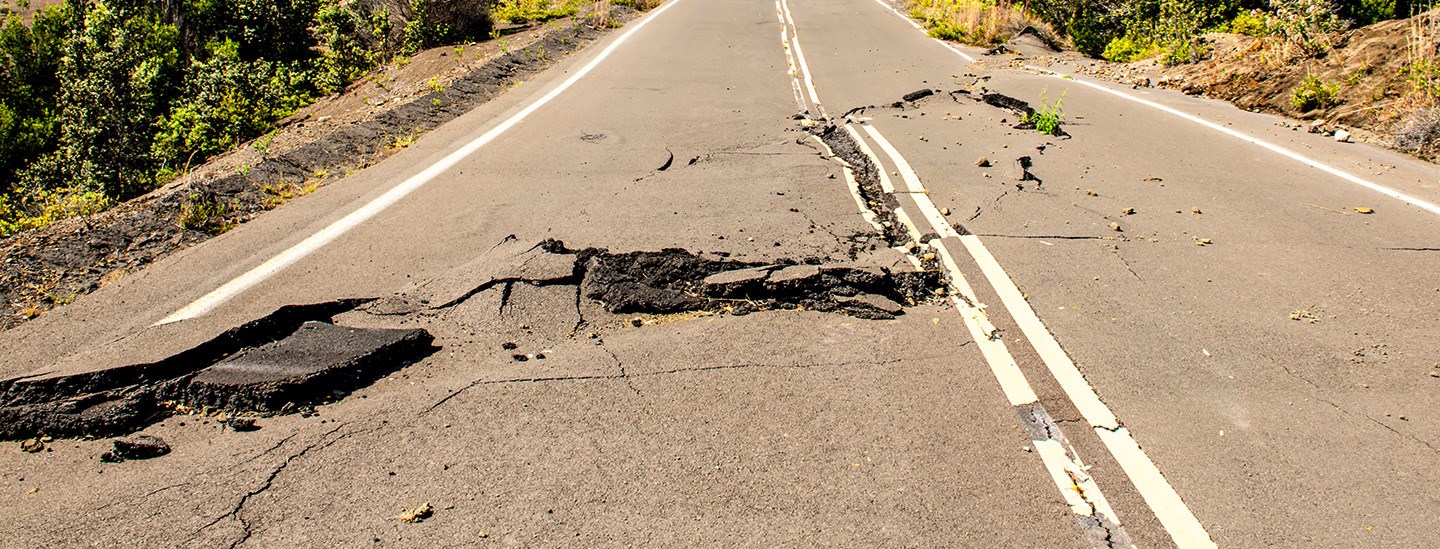Planning and preparing for an earthquake can play a major factor in your organization's safety and recovery. Recovering quickly from such a natural disaster requires preparedness, advanced planning, knowing what to do in the event of an earthquake, as well as rebounding from any serious injury, property damage, or any other business disruption.
- Before an Earthquake Occurs: Review your Policies and Coverages
- Pre-Planning your Business' Safety before an Earthquake
- Sheltering During an Earthquake
- Post-Earthquake Recovery Guidelines for your Business
- Filing an Insurance Claim due to Earthquake Damage
Before an Earthquake Occurs: Review your Policies and Coverages
If your business office is near or in an area prone to earthquakes, you must always be prepared. In anticipation of such an event, it is never too early to contact Gallagher and ensure you have the appropriate coverage, update your current property information, and understand what is covered with your current policy.
Pre-Planning your Business' Safety before an Earthquake
Your emergency response team should continually review, revise and communicate your earthquake preparedness plan. Unfortunately, earthquakes can happen anytime, anywhere. It is imperative you are ready.
We recommend you review your emergency communications with your emergency response team. Equip your emergency kit to be prepared for any natural disaster, including earthquakes. Create an emergency kit including these sample documents below, and you can review and update annually to prepare your business and your employees in case of an earthquake or other natural disaster:
- Meet with your local emergency response team to discuss the potential for an earthquake.
- Be sure your Business Continuity Plan has been updated and communicated, as well as your Business Interruption and Extra Expense Claims.
- Review, revise and communicate your internal communication plan to ensure your employees know what to do and where to go for information in the event you are faced with an earthquake.
- Ensure up-to-date Exterior and Interior Asset Inventories are documented and photos and/or video are included.
- Ensure your Emergency Listings are up-to-date.
- Update your Crisis Communications Planning Checklist.
- Update your Social Media and Disaster Communication Plan.
- Make sure your property is equipped with items on the Disaster Supply List.
- Review your Earthquake Preparedness Checklist quarterly.
Employers are responsible for providing a safe and healthy workplace for their workers. If possible, coordinate with building maintenance to prepare your office building in the event of an earthquake.
- Secure heavy items like bookcases, refrigerators, televisions and objects that hang on walls.
- Store heavy breakable objects on low shelves.
- Consider making improvements to fix structural issues that could cause your building to collapse in the event of an earthquake.
Sheltering During an Earthquake
When you feel the start of an earthquake, you will not have much time to react. Safety, at this point, is the first order of business for your staff, employees and possible tenants. Wherever you are, direct your staff to drop to their hands and knees, cover their heads and necks and then hold on to something sturdy while the earthquake continues.
If you are in an office, there will be little time to change locations. Crouch under a large object like a desk and cover your head with your hands. Assist any staff, especially those with disabilities and special needs, to crouch under tables and large objects. If you are outdoors, crouch in a spot away from buildings and other large objects. Try to find cover and protect your head and neck.
Post-Earthquake Recovery Guidelines for your Business
After receiving the "all-clear" signal from your local agencies or emergency personnel, you can begin your post-earthquake measures. Once it's safe to return to your property or building, examine the interior and exterior of your property, and report the information to your claims handler. It's important that your claims handler receives this information as soon as possible.
While organizing your post-earthquake recovery efforts for your business, be sure to review the emergency plan, and update as necessary. Also, replace and restock items on your Disaster Supply List. You may also review your Business Interruption and Extra Expense Claims list on how to assess possible business interruption impacts, as well as potential claims coverage. Lastly, complete any mitigation items as directed by FEMA or your insurance carrier.

